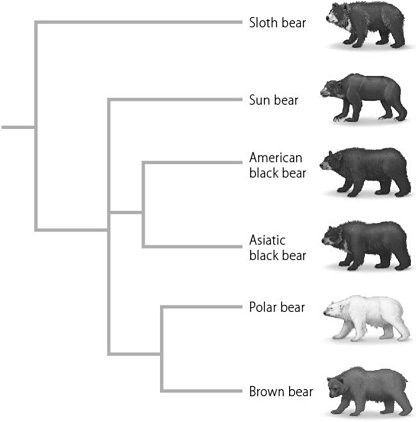Which of the following is (are) NOT characteristic(s) of the pathways activated by second messengers?
a) Each signaling pathway consists of a series of distinct proteins that operate in sequence.
b) Some phosphatases and protein kinases in the pathway have numerous proteins as their substrates; others act on only a single protein substrate or a single amino acid of a protein substrate.
c) Alterations in the conformations of signaling proteins are often accomplished by protein kinases and protein phosphatases that, respectively, add or remove phosphate groups from other proteins.
d) Each protein in the pathway typically acts by altering the conformation of the previous (upstream) protein in the series, an event that activates or inhibits the protein.
Ans: d) Each protein in the pathway typically acts by altering the conformation of the previous (upstream) protein in the series, an event that activates or inhibits the protein.
You might also like to view...
Use the phylogenetic tree below to answer the following question(s). According to this phylogenetic tree, which bear is most closely related to the American black bear?
According to this phylogenetic tree, which bear is most closely related to the American black bear?
A. The brown bear B. The Asiatic black bear C. The sun bear D. The polar bear
One of the first sequenced genomes was for the bacterium Haemophilus influenzae. Once the genes were annotated, a(n) ________ was constructed to represent the entire genome visually.
A. physical genome map B. ORF map C. metagenomic map D. color-code map
A psychoactive drug that delays the removal of a neurotransmitter from the synapse will ________
A) dampen the response of the receiving neuron B) prolong the effect of the neurotransmitter on the receiving neuron C) prevent the neurotransmitter from working D) bind to the receptor and affect the receiving neuron in the same way as the neurotransmitter
Which of these is an example of temporal isolation?
a. One species is nocturnal, and the other species is diurnal (active during the day). b. One is a type of primate; the other is a type of marsupial. c. The average weight of the individuals in one species is 100 pounds; in the other species, the average is 640 pounds. d. One species cannot dance; the other only mates with species that can dance properly. e. One species is found only in New York, the other only in London.